
A set from the next Star Trek movie or an actual rendering of SOM’s plans for Penn Station?
Before I get too far into this little exercise in future planning, let’s remember something about this whole thing: The Municipal Art Society has stressed both to me and to the public that their competition to design a new Penn Station was about transit planning. It was about finding a solution to Penn Station’s train capacity and passenger flow problems while relocating Madison Square Garden and redeveloping the area of Midtown surrounding the train station. It wasn’t supposed to be about undoing the destruction of Penn Station 50 years ago or reclaiming the area for one architect’s ego as has happened with the PATH Hub at the World Trade Center site.
In fact, during a presentation yesterday of the four plans by SHoP, Skidmore, Owings and Merrill, H3 Hardy Collaboration and Diller Scofidio & Renfro, Vin Cipolla, head of the MAS, spoke again about the reality-based nature of the designs. Calling the proposals a “range of practical and liberating possibilities for an expanded, world-class Penn Station and a great new Madison Square Garden,” Cipolla said, “These ideas are buildable. I think everyone took pains to emphasize that.”
Buildable for Cipolla may not mean buildable for anyone else. One that has drawn the most attention — SHoP’s reimagining of Midtown West from the Hudson Yards and High Line straight on through to the current Madison Square Garden site — came with a price tag. Vishaan Chakrabarti, a SHoP lead, spoke about how their plan would be self-funded through a variety of payments in lieu of taxes and air rights sales. These deals, he claims, would generate the $9.48 billion necessary to realize their design. That’s almost two whole phases of the Second Ave. Subway for the cost of one train station and a new arean. What a bargain.
In a dialogue on Twitter, Chakrabarti later cited to the 7 line extension as a similarly successful project, but that’s a comparison fraught with problems. The 7 line has been under budget because the city cut out half of the proposed train extensions. Furthermore, it has, so far, failed to live up to its economic promises. It likely will recapture a lot of its value, but early returns have not been as high as expected. Attempting to generate $10 billion through a similar program may just be folly.

Diller Scofidio & Renfro’s plans move MSG to the Farley building and convert Penn Station into a destination in and of itself.
Even as the renderings capture our attention, the firms seem in it for the wrong reasons. The designs are based on creating a grand building rather than expanding Hudson River rail capacity. “Nearly 640,000 passengers use Penn Station every day, and yet it does not act as a dignified gateway to one of the world’s greatest cities,” Roger Duffy, the design partner who developed SOM’s plans, said in a statement. “What we propose creates a civic heart for Midtown West – one that is truly public and open to all – while allowing New York City to maintain its position as a global center of commerce, industry and culture.”
So what are we left with then? We’re left with fancy renderings that won’t happen, price tags absurdly out of reach, and talking points for Madison Square Garden to dispute this exercise. What we need are some realistic plans for a better Penn Station and reasonable funding goals and mechanisms. As Hilary Baron said to Crain’s, “We have to be careful, given our fiscal constraints, not to get trapped by the old visions of Penn. This can’t be another World Trade Center PATH station.”
Right now, it is both better and worse than PATH. It’s better because no one has committed to fund these things. But it’s worse because it’s a patently silly exercise in imagination with little attention paid to what we can actually accomplish, what we need to accomplish and how, ultimately, we can get there.
Despite my inherent skepticism, it’s still illuminating to look at the renderings and imagine what we could do if money were no obstacle. Click on the thumbnails for much larger versions.
SHoP

SHoP’s grand hall is reminiscent of a modern-day train station but carries a price tag of nearly 11 figures.

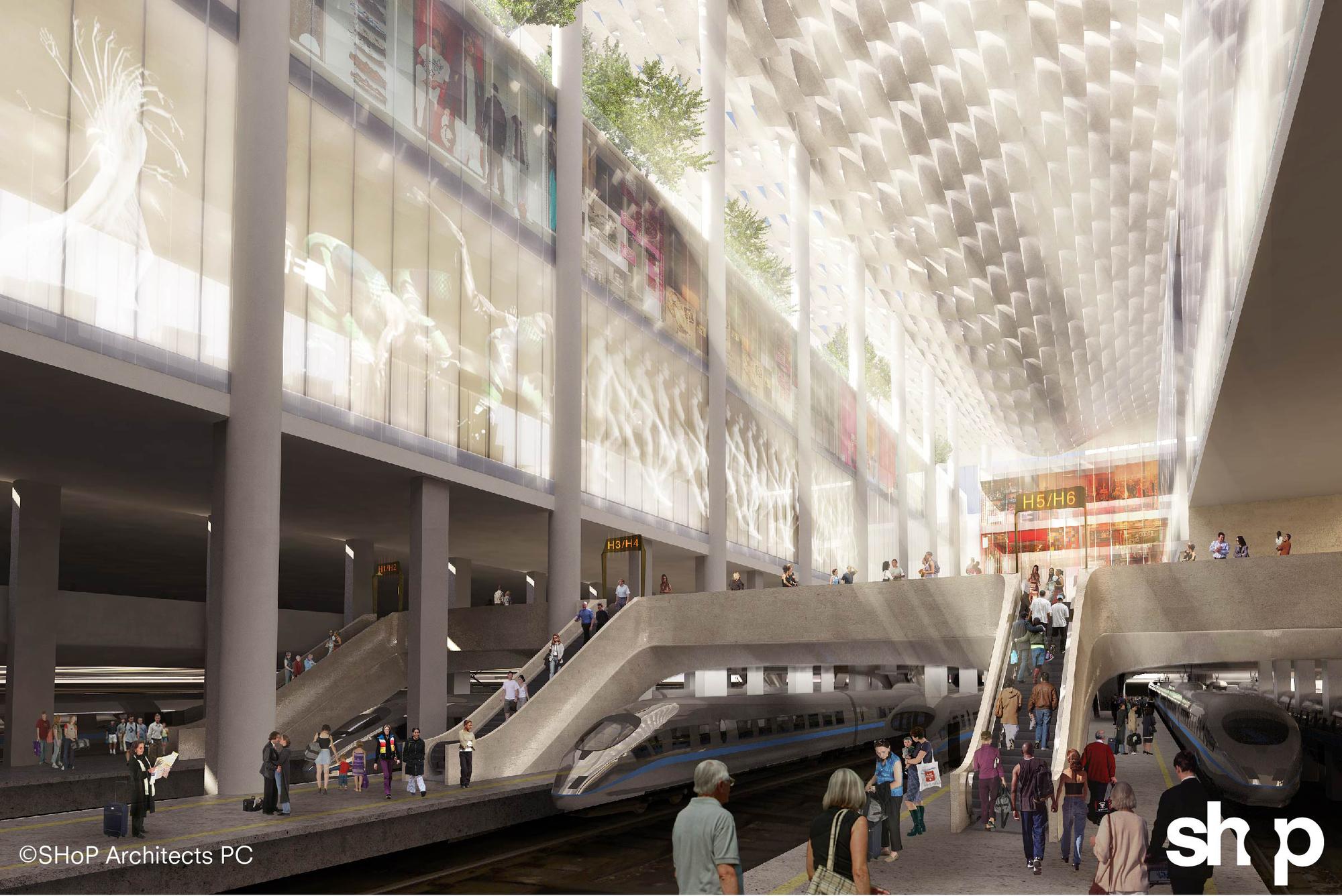
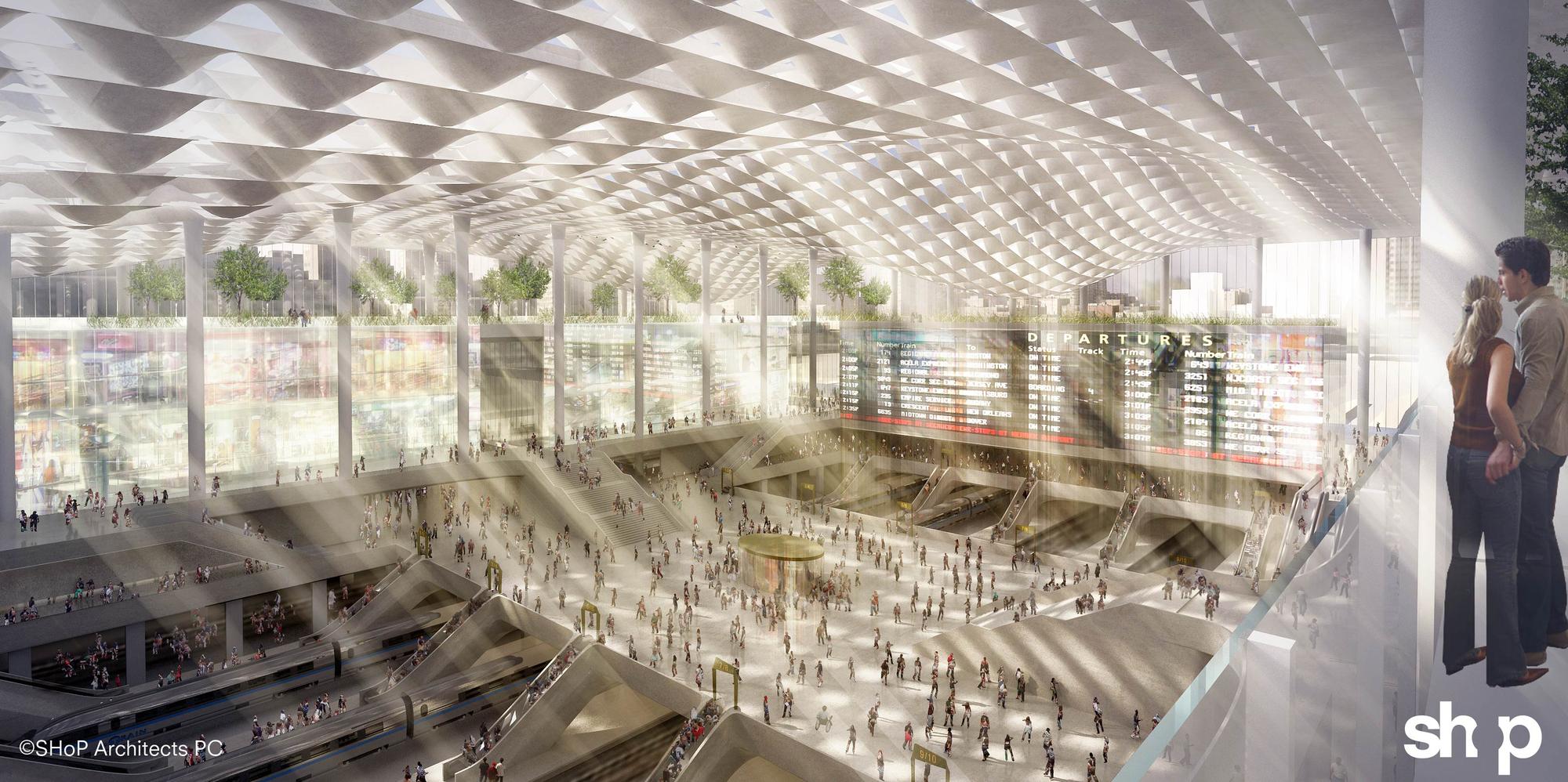
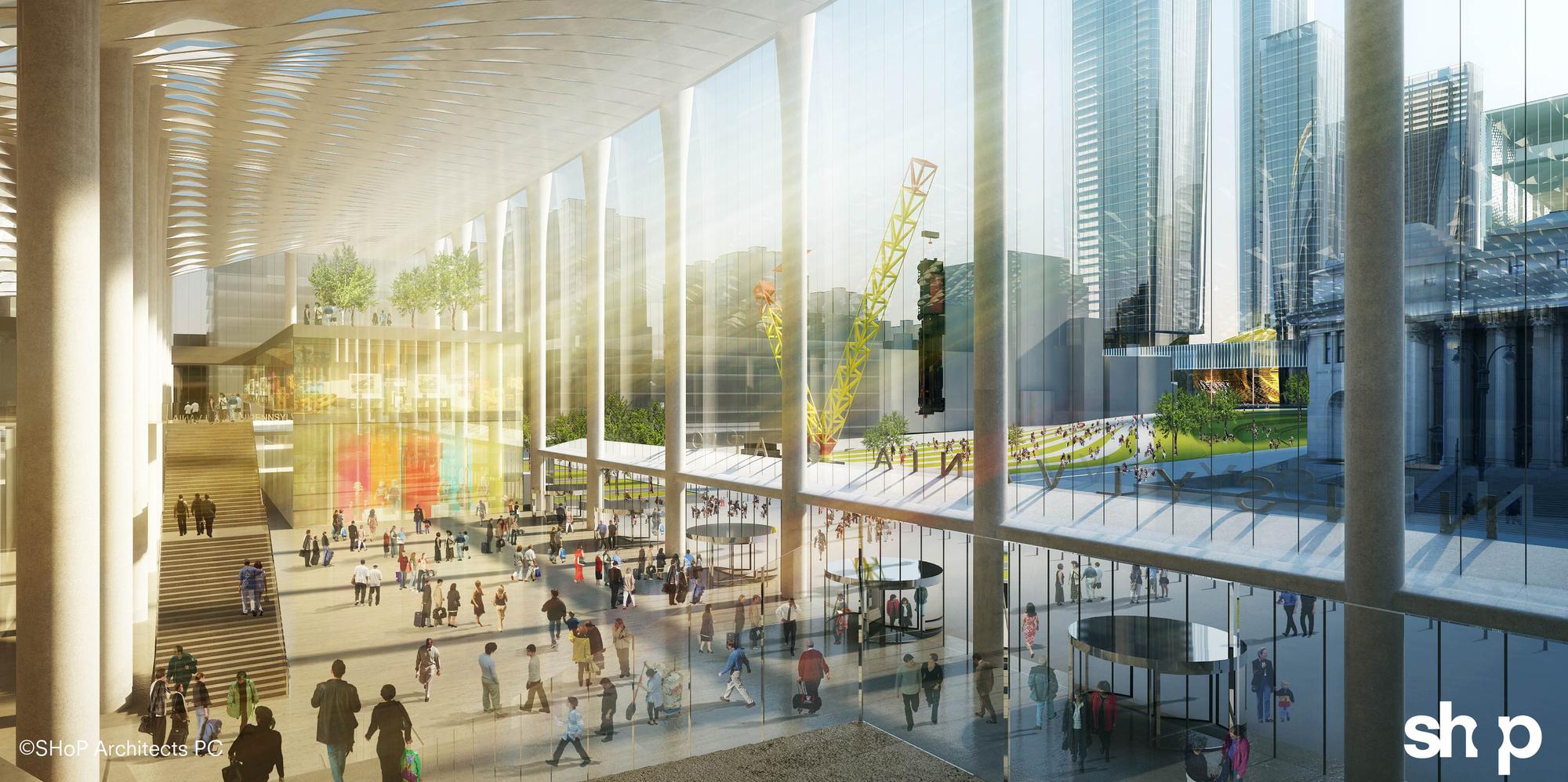
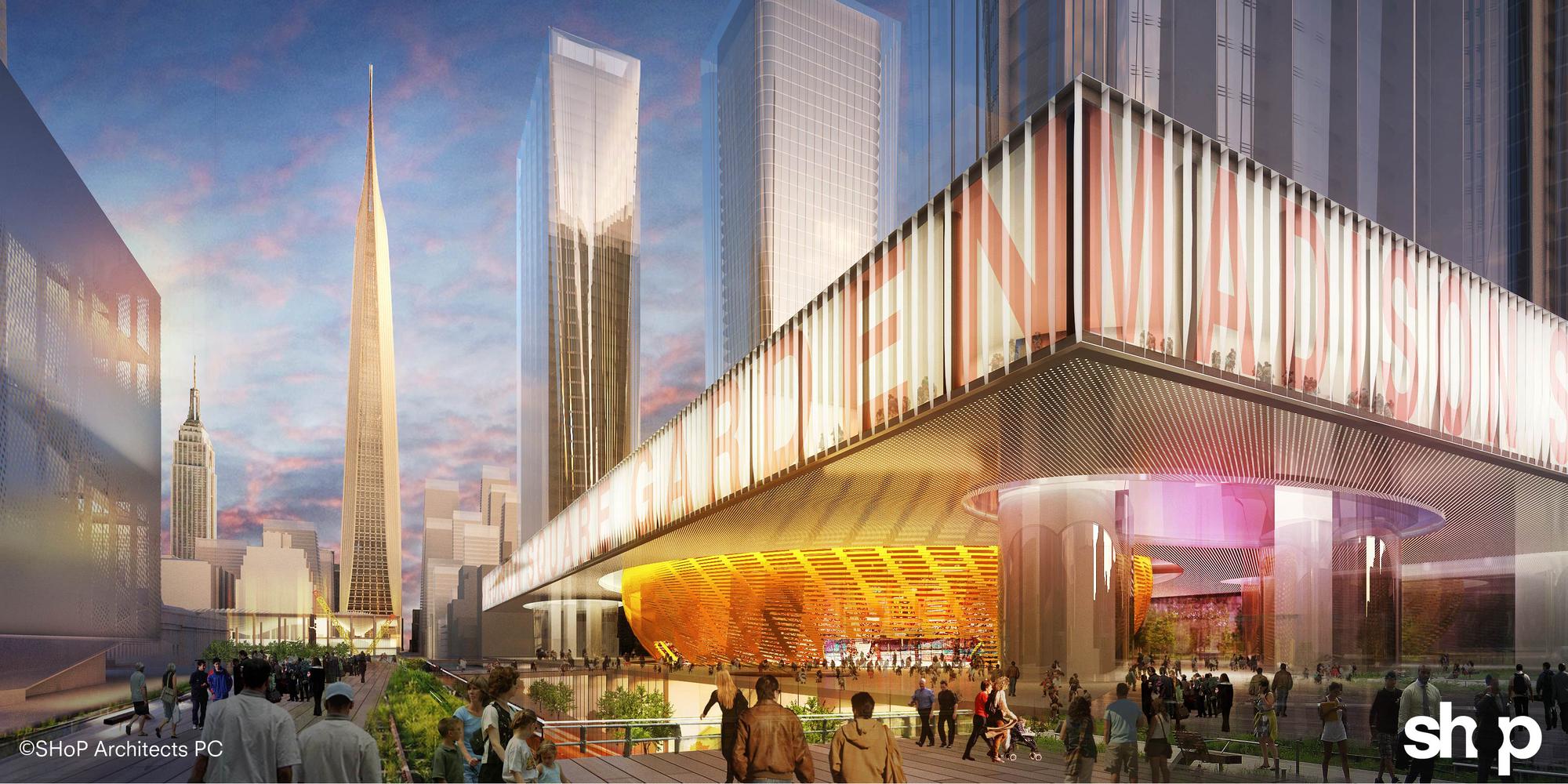
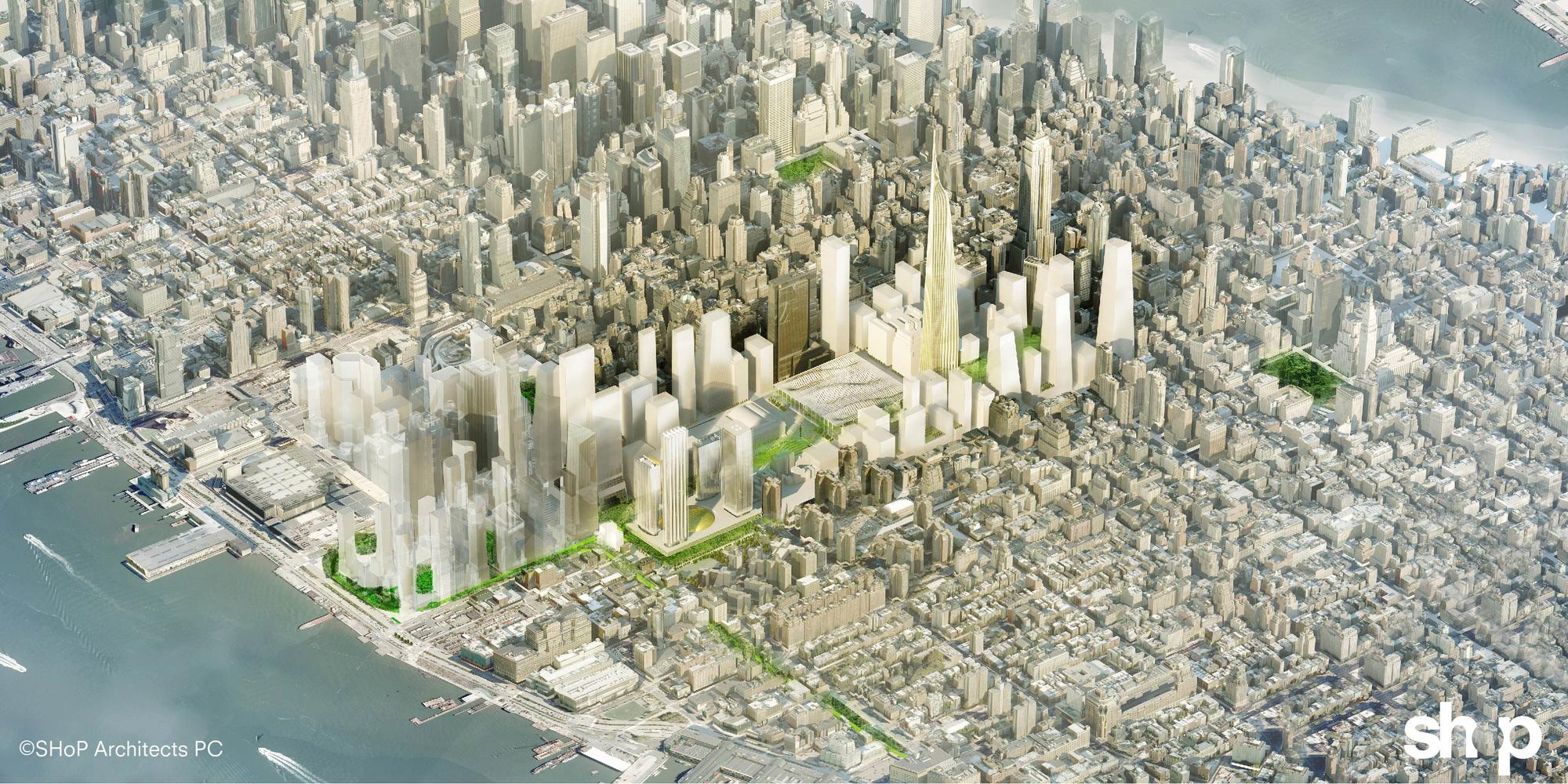
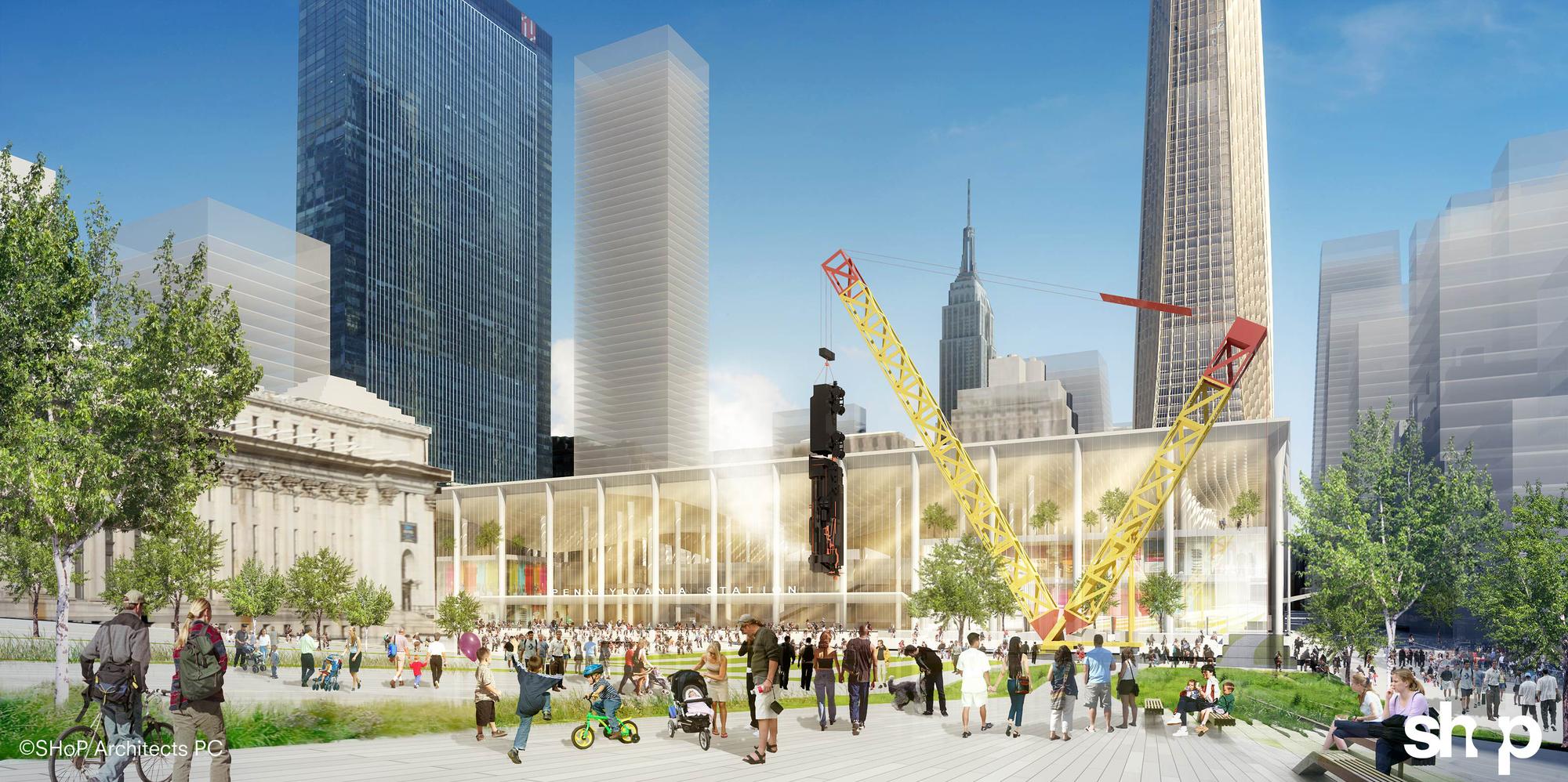
SOM

If you look closely enough, you may see Captain Kirk and some Vulcans boarding an Amtrak train.
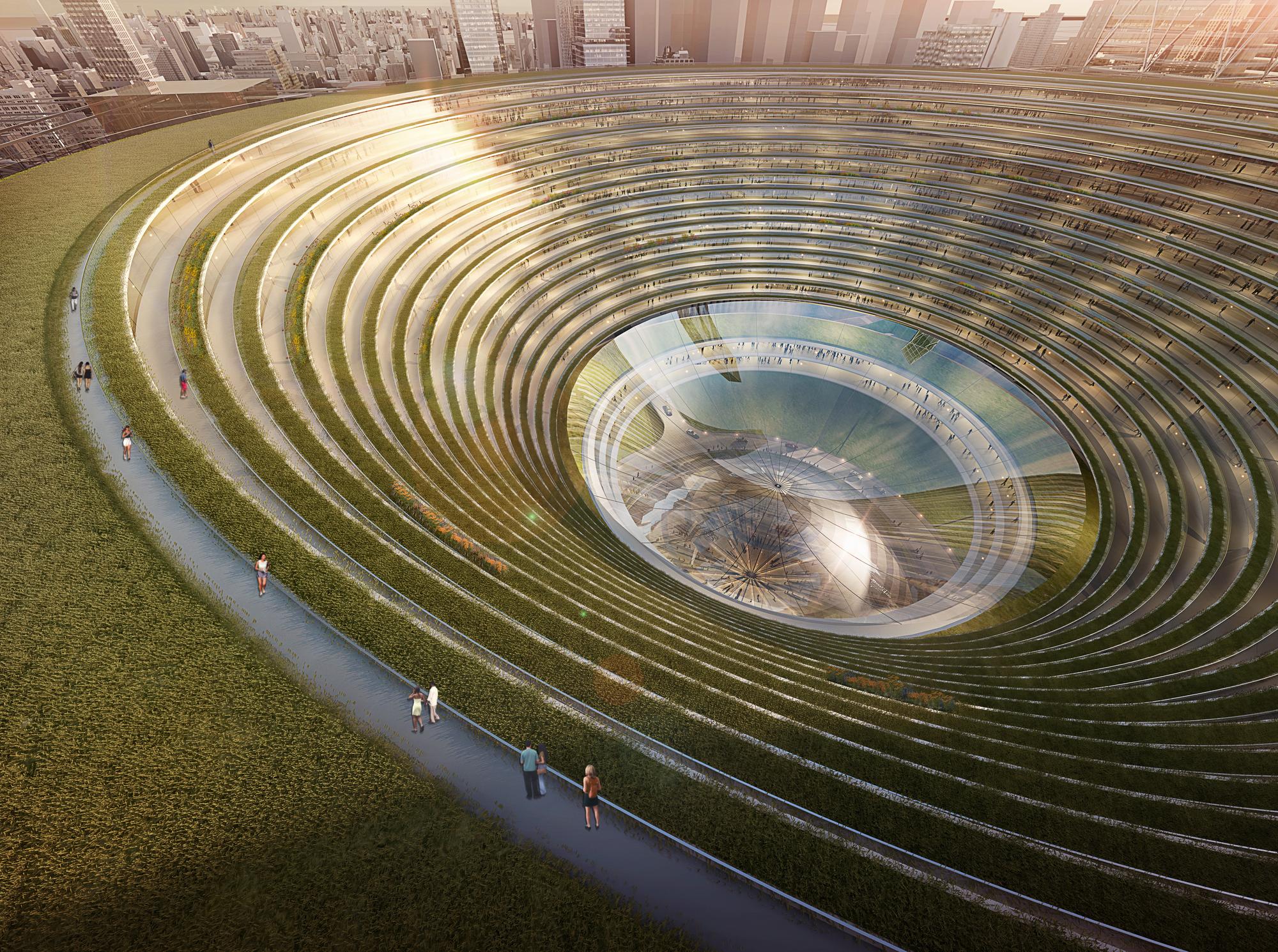
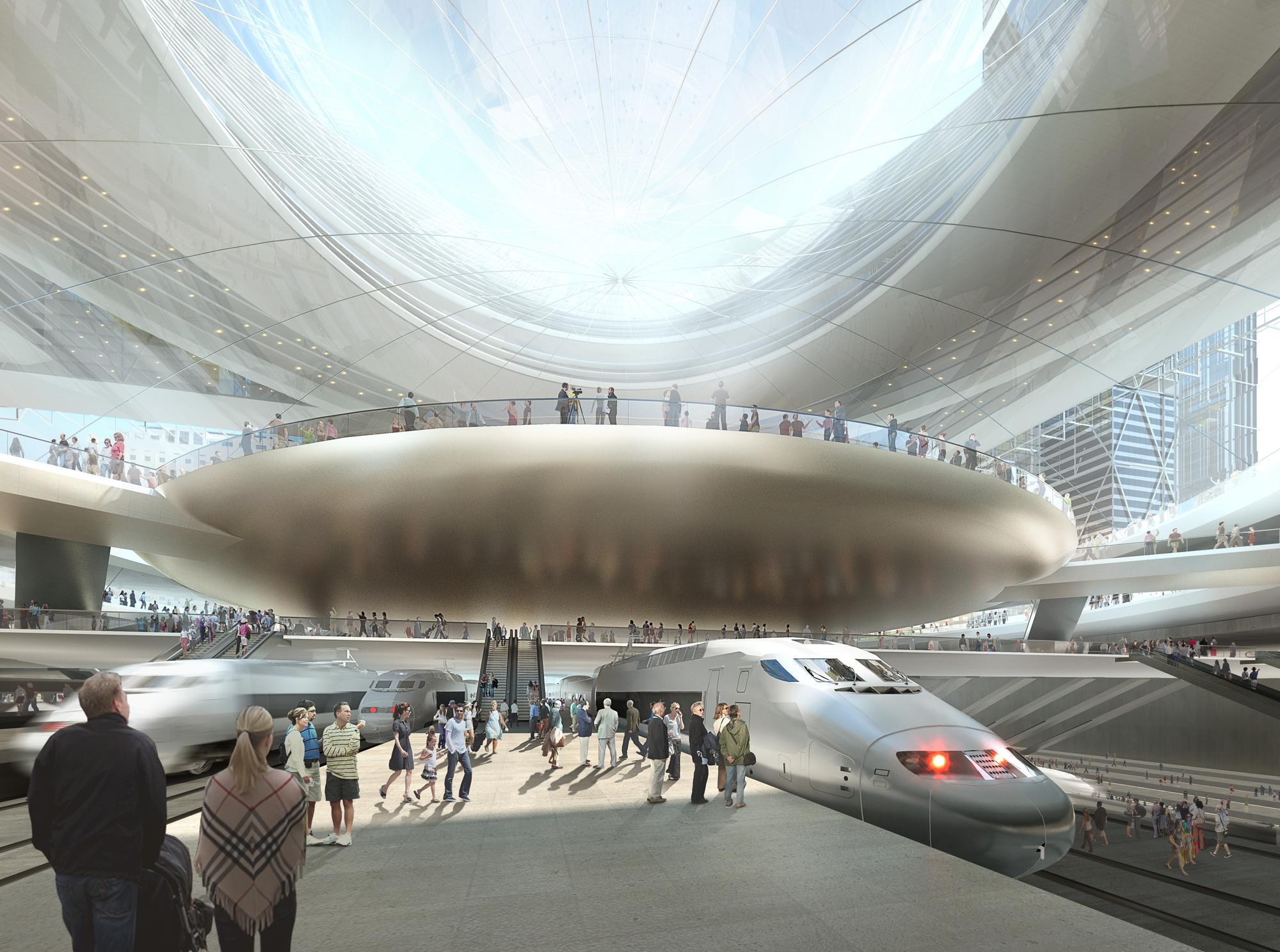
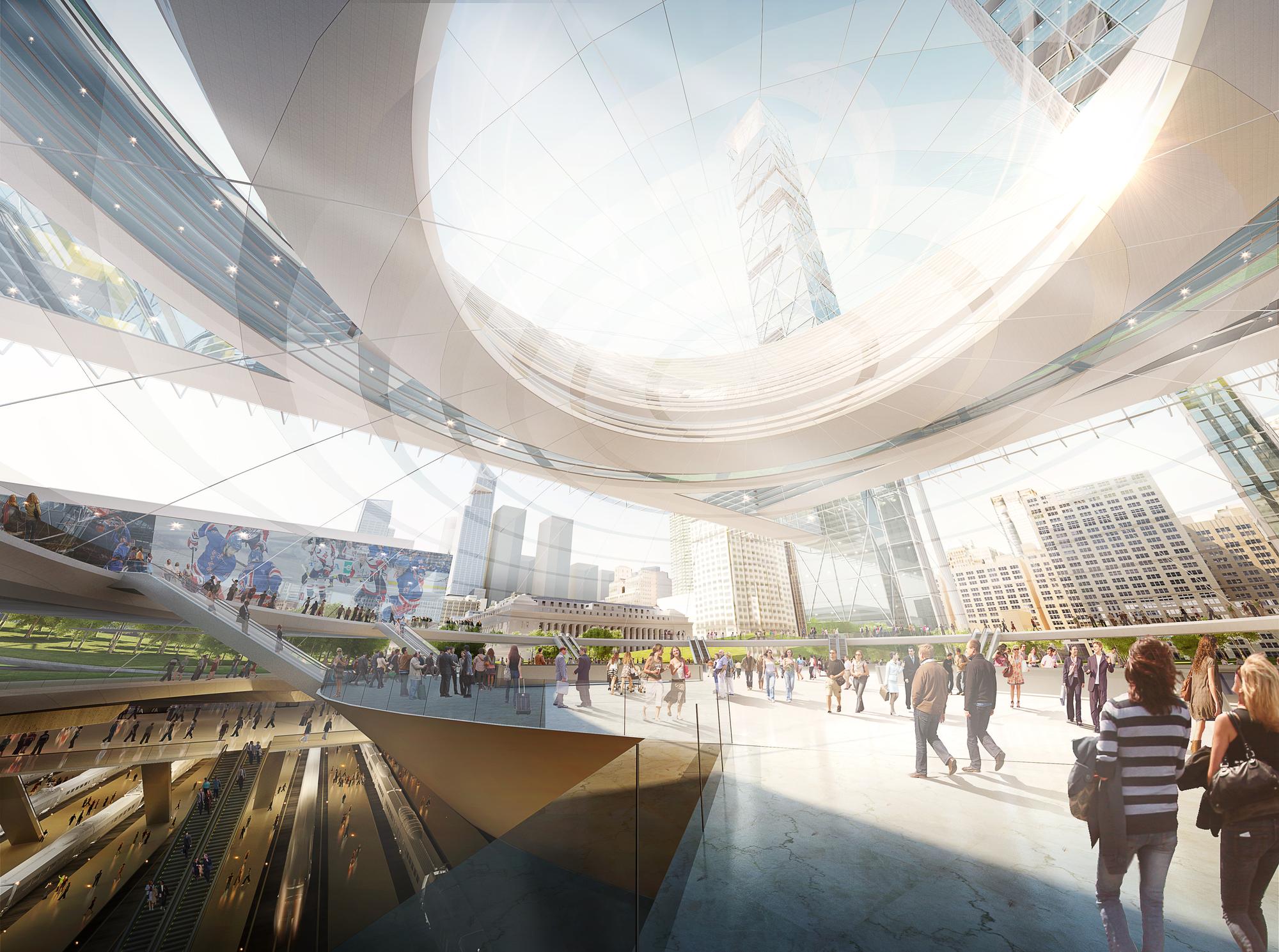
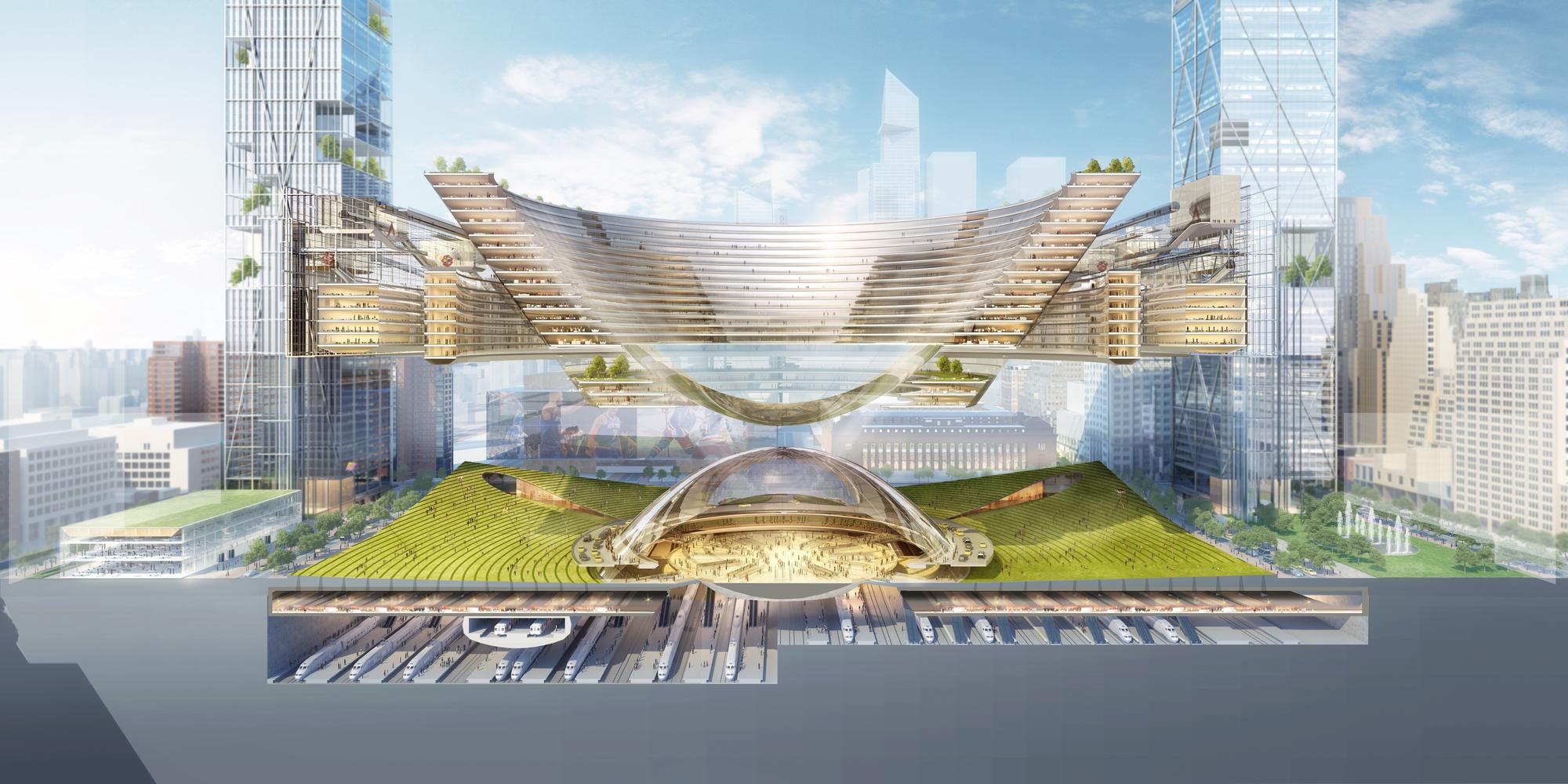
H3 Hardy Collaboration Architecture

H3 Hardy Collaboration Architecture



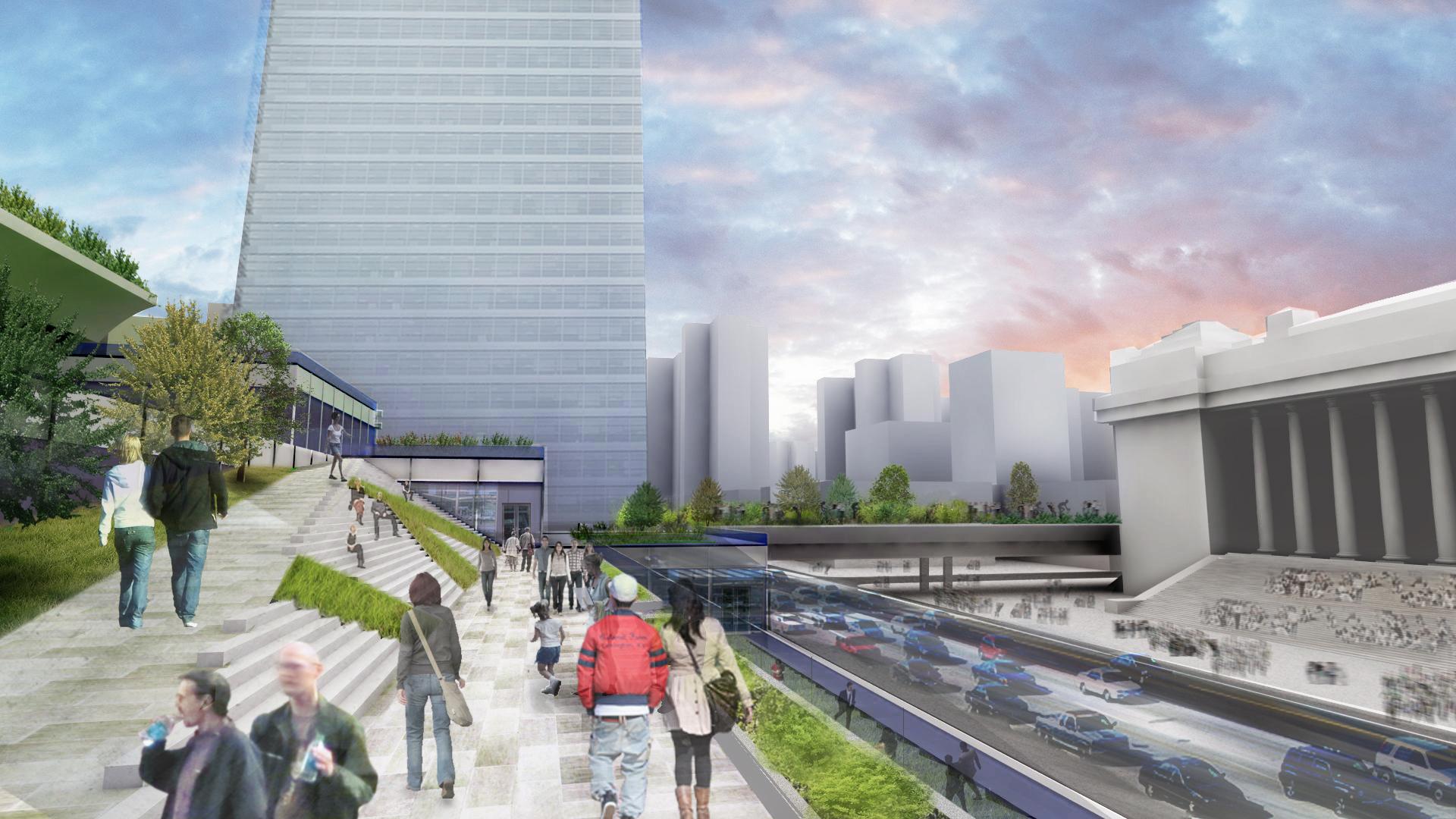
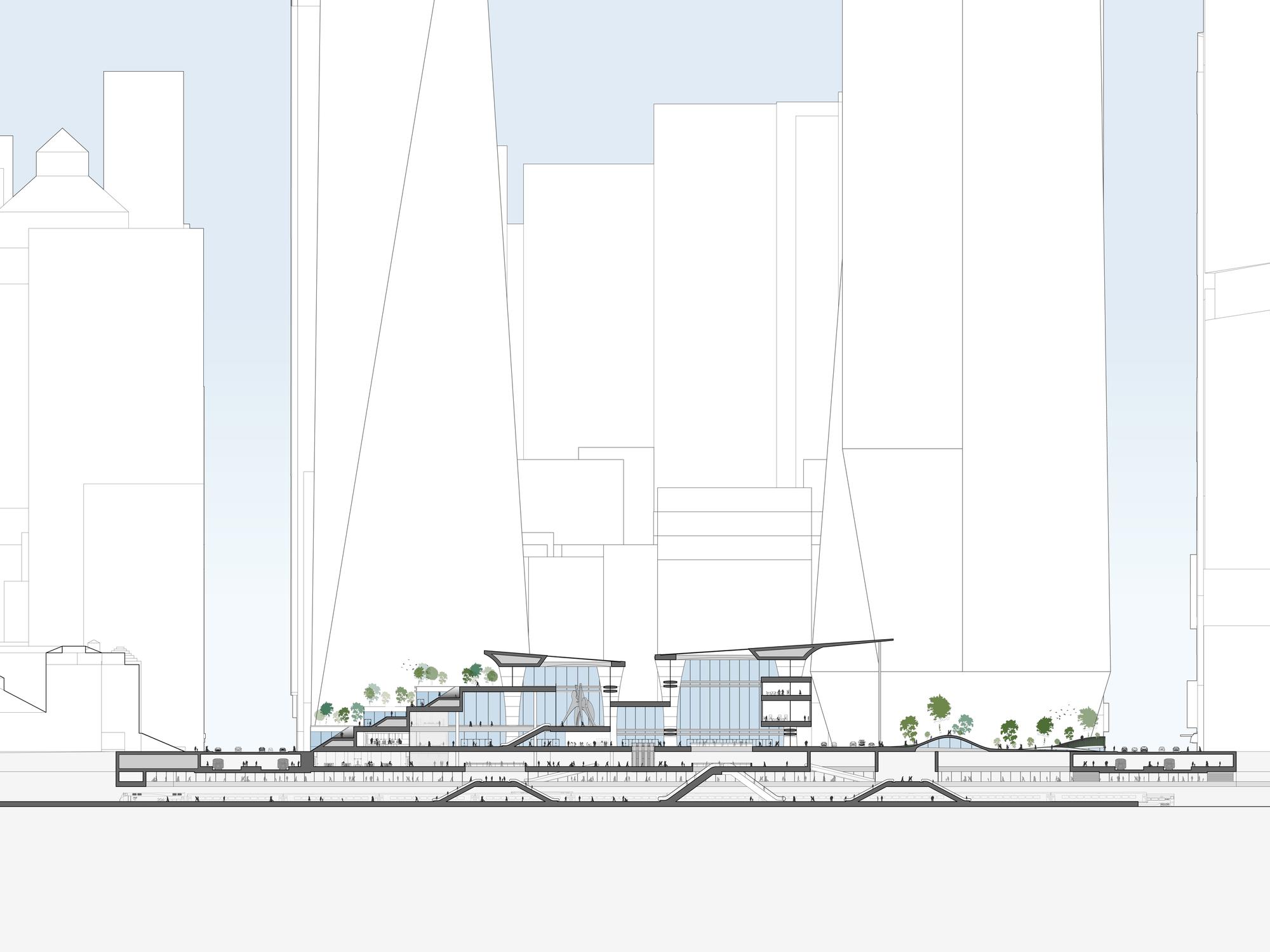

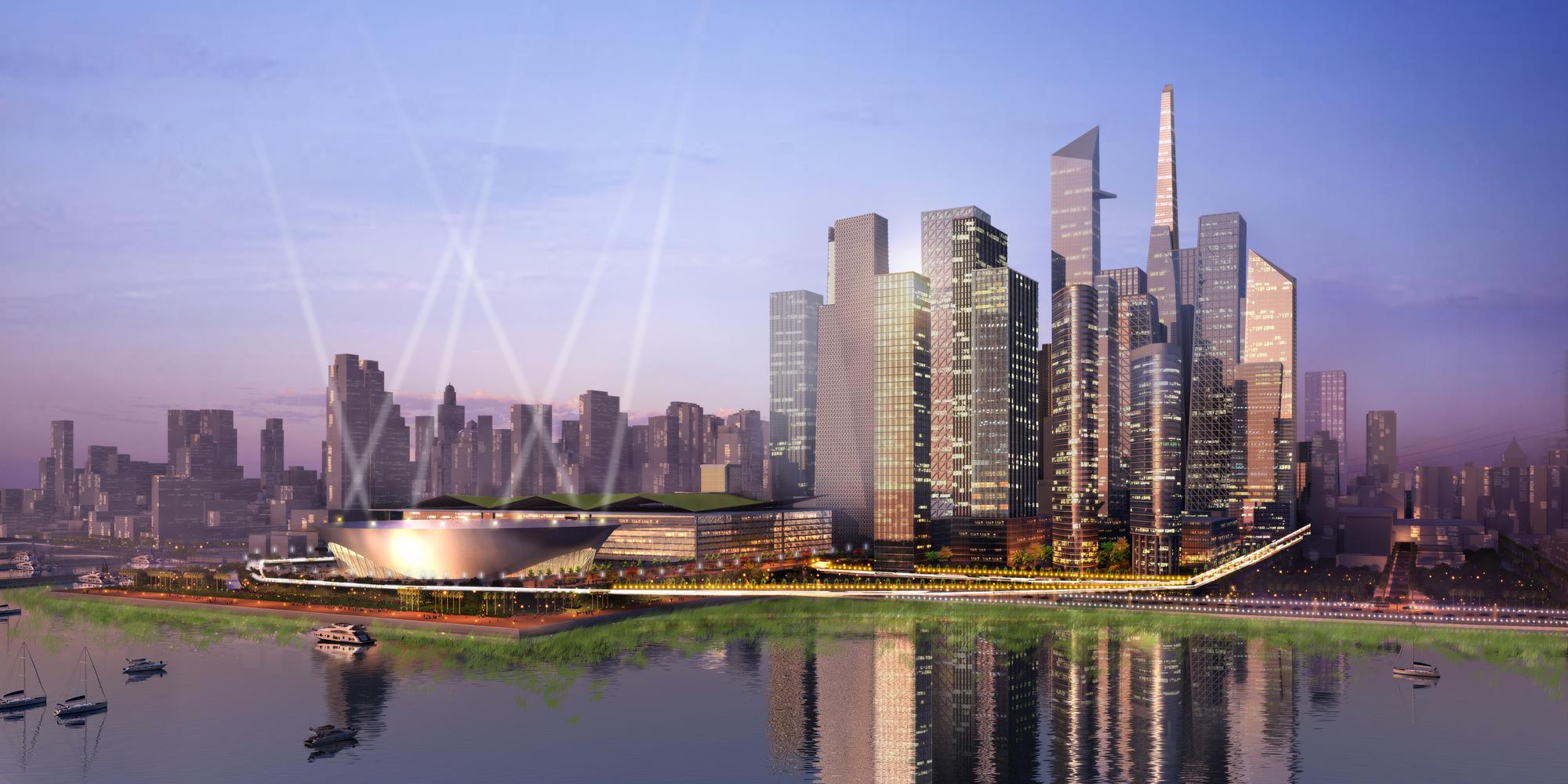
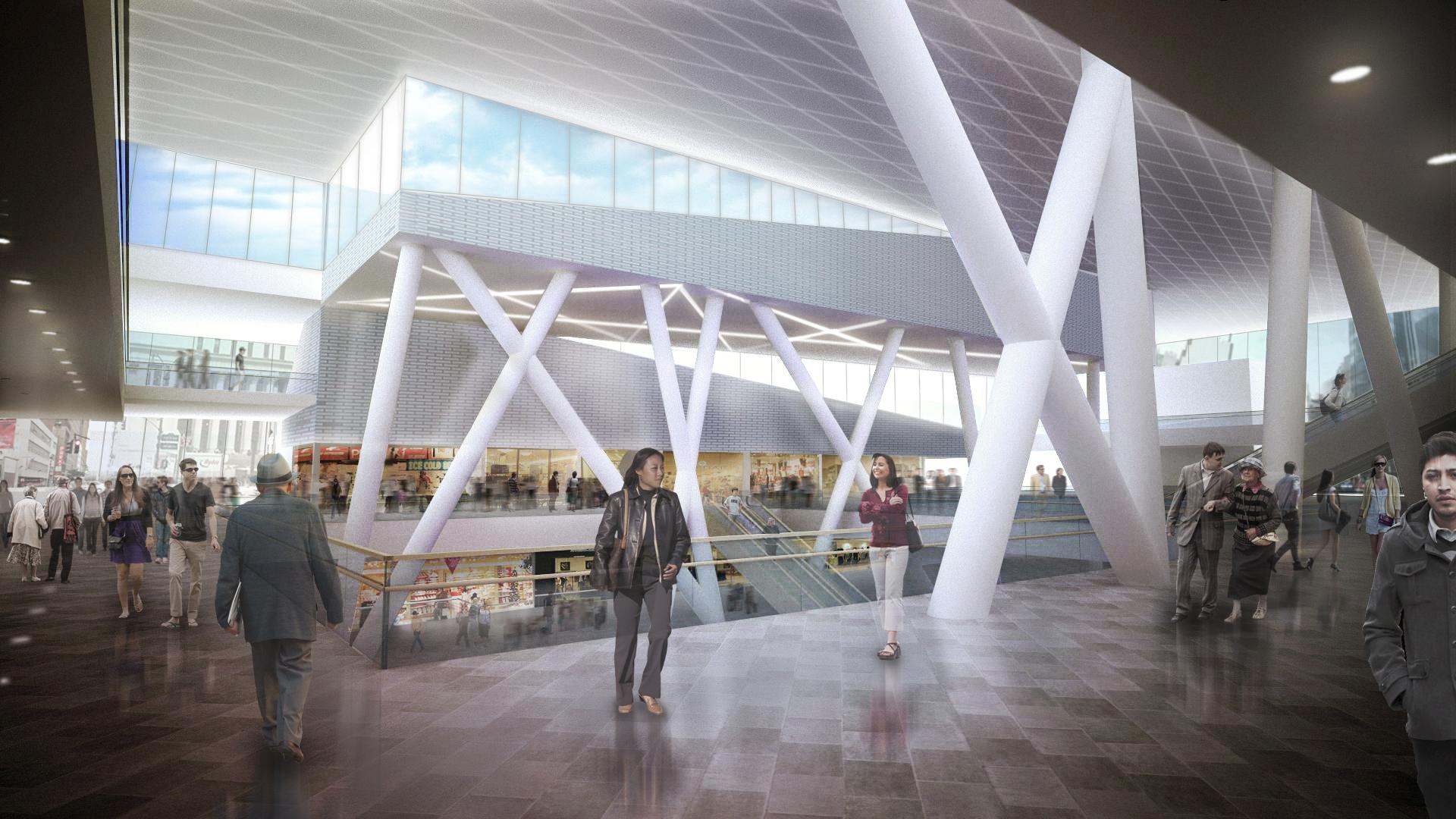
43 comments
The Hardy rendering looks pretty realistic to me. All others are a mere flight of fancy.
I agree with that opinion about the Hardy plan. The goals of Penn or any train station should be to make the commute as efficient and comfortable as possible for its users, at a reasonable cost. The art should be far down the pecking order. Once again, the cultural elites ( like those found at the Municipal Art Society), are oblivious to the cost and even more importantly, what must be sacrificed in order to afford it, and who pays? I believe most people would consider the Second Ave Subway ( phases 2 & 3), to be the more important priority ( as far as projects forecasted not to be finished within 5 years). Another priority should be spelled out in three words: Improved airport access. Such as increasing the number of tracks on the LIRR between Ronkonkoma and Farmingdale ( not to mention a new Station on Route 110), to better open up the opportunities at MacArthur Airport ( for commuters and freight alike), and some kind of improved service to and from LaGuardia. I never thought I would say this, but compared to the Art Society and these architects, the MTA, Port Authority and even the Politicians have some concept of priorities (although they are not good at holding down the cost). Why? At least they don’t advocate wasting $9b on one Train Station when other projects are much more important.
The MTA and PA don’t seem to really advocate anything, and both could probably be happy to not have more rail in the region.
I just still don’t see Penn being as bad as people reflexively like to say. I think if people can look past how butt ugly it is for a second, they would probably agree with me. The major functional design problem is its location, and second to that probably passenger circulation. The latter is probably fixable.
Beyond function, there are operational problems, which are very fixable, and these maybe are even bigger problems.
Penn is extremely cramped. The slightest train delays cause dangerous crowding conditions. Even when things are more or less on schedule, crowding results in slow circulation out of and on to the platforms. There was an instance last year at Thanksgiving when train delays caused cops to force people to line up on surrounding surface streets before even going into Penn Station.
Compare that to newly built Secaucus, which can handle enormous crowds and simultaneous platform boardings/disembarkings.
Penn isn’t really so much ugly as more or less invisible from the outside. On the inside, the cramped conditions, narrow hallways and low ceilings make for a miserable trek.
“Miserable” is hyperbolic and “dangerous” is just silly. Delays happen every day. Injuries are vanishingly rare.
The narrow platforms and limited number of (also narrow) access points certainly slows the process of boarding and disembarking, particularly when you add in the time it takes to navigate through the corridors in the station.
There are, obviously, a bunch of theoretical ways to speed the time it takes passengers to get from their trains to their desired station exit (and vice versa). The question is what fix would maximize positive net return for passengers.
In other words, estimate average time saved per customer for any given project, ask customers how much extra they’d be willing to pay for tickets to save that time, use the responses to calculate the gross benefit and subtract the estimated cost of the project to find the estimated net benefit.
(As for increasing capacity, my understanding is that no work at Penn can actually do that because the bottleneck is tunnel space rather than station capacity. Thus, the only thing that can come of work at Penn is shorter travel times and increased aesthetic enjoyment.)
“Train dangerous” is a little different from “car dangerous,” in any case. He’s probably right that crowding conditions can get bad, for a train station, but you’re right they should be kept in perspective.
Admittedly I use Penn for Amtrak more in a typical month than I’ve used the suburban railroads there in my life, but I don’t see this crowding issue at the platform level. Certainly with Amtrak, they don’t even let you down to the platform until the train has platformed. Penn is a terminal for NJT and LIRR, so there isn’t much reason you can’t do that with these services too, if it’s not done already.
I don’t really see why this should be controversial: the problem with capacity is primarily how many trains you can get in/out and how fast. The station itself has pretty adequate, if misutilized and unpleasant, space. Maybe the political class just has a stiffy for building something monumental and, since they don’t need transit for themselves, don’t care about that.
The problem with Penn is that the physical space on the LIRR concourse has the worst possible configuration. Escalators which are immobile half the time take up half a platform width, when there should be wider stairs in their place. Column placement blocks passenger flow, and concession stands in the cramped corridor also hamper flow. The numerous sketchy retail facilities there also disorient, due to the relatively distracting nature of their storefronts.
In addition, from the LIRR concourse, there is only ONE direct exit to street level. The other exits involve going through One Penn Plaza, the two labyrinthine subway stations, other parts of Penn Station, and a Kmart.
It’s probably not the worst train station out there, but there is lots of room for improvement.
(In addition, LIRR also does not allow people on the platforms until a few minutes before boarding, which also leads to problems – despite the fact that trains show up to their assigned platforms on a fairly regular basis, a giant mass of people staring at the departure board blocks pedestrian flow from the platforms to the main concourse.)
I don’t dispute it has retarded problems, but many of its retarded problems seem pretty superficial. It’s bureaucratic intransigence that prevents us from solving them.
A lot of it is crappy layout problems, which you would probably need to get of a few walls to fix.
The simple solution to operational/crowding troubles you mention is the one most advanced (post-?)industrial countries have long figured out: run trains on time, and frequently. Actually, that’s probably the only solution period. The only place you can make a case for spending billions$ is on more tracks from New Jersey.
I agree it’s aesthetically awful, and the bad lighting and low ceilings make it the last place I’d want to spend time. But those things don’t stop it from being a functional train station. They just make it, well, suck.
“Miserable” is hyperbolic and “dangerous” is just silly. Delays happen every day. Injuries are vanishingly rare.”
“Miserable” may be in the eye of the beholder, but it’s a common adjective used to describe the station. Riders funneled into Penn have the misfortune of being exposed to Grand Central, and thus have the comparison between a cramped, low-ceilinged glorified basement and a relatively spacious, airy, functional station thrust in their views often.
“Dangerous”. Well, I think severe crowding on platforms is inherently dangerous, as much so at Penn as it is on the subway platforms on the Lex line at Grand Central and elsewhere. I think the severe crowding conditions that accompany delays and general crowding at high usage times makes exacerbates fire risks and the like. There’s a reason that Penn would not be built to its current specs if it was built today. I ride on highways in the NYC area that were built in the 1950s and never geometrically updated. They are usable, but relative to modern alignments, they are dangerous. Nothing hyperbolic about that.
“(As for increasing capacity, my understanding is that no work at Penn can actually do that because the bottleneck is tunnel space rather than station capacity. Thus, the only thing that can come of work at Penn is shorter travel times and increased aesthetic enjoyment.)”
I believe Gateway would add platforms, which implies adding platforms to modern specs, as well as install new tunnels, so you’d get two benefits.
I understand that this stuff is expensive. NY has a budget pushing $150 billion per year. Assuming a 10 year build time and zero increase in NY’s budget over that ten years (ha ha), that means NY alone has $1.5 trillion sandbox to play in. Very modest re-orientation of funds, on the order of 1% of budgeted funds, could singlehandedly allow NY to build the entire tunnel and station project. I’m not even suggesting that NY do this, I’m just saying that money is there in spades if transportation was elevated to a higher priority.
Adding platforms may literally be a bad idea. It might even be a good idea to decrease platforms, and add throughput per platform. The sweet spot would probably be adding two tracks from New Jersey, and achieving ~40TPH per peak track at peak times.
The Hardy rendering looks pretty realistic to me. All others are a mere flight of fancy.
If Penn Station is ever going to be anything better than it is, then we need those “flights of fancy” to help give the more practical ideas room to breathe.
The new PATH terminal is obviously over-built; by the same token, we shouldn’t be totally anti-architecture. When done right, public architecture serves a useful civic purpose.
Somebody correct me if I’m wrong but is one penn plaza 1+1 free deal with MSG?
Even the Hardy one is a bit of a non-starter, based on the security levels of today and the desire to keep track level access/line-of-sight viewing of the platforms and trains separate from the free movement sections and levels of the station. Much as they all may want to recreate the open air vertical spacing of the original Penn Station, it’s as fanciful given the realities of the 21st Century as designing an airport terminal with curbside access to the jetways.
(And — even though it would give The Municipal Art Society the vapors — it would have been nice to see at least one of the architectural firms take a shot at conceptualizing a 21st Century Penn Station with far more open space on the concourse level, but one that also incorporates a new Madison Square Garden into the design. Even if the MAS can’t visualize any new Penn Station that doesn’t banish MSG to the cornfield.)
What “security” is that? The reason I’d call Hardy a lousy idea is that providing a light well to the platform area sacrifices pedestrian circulation area, so you’ll be held up in a crowd while you watch through that big hole in the floor as your train pulls away—but being able to see the trains when you’re in the train station isn’t exactly a revolutionary notion. (Though being able to jump down to the tracks from two stories up is probably suboptimal from a public-health standpoint, come to think…)
Jamaica has glass guards to prevent jumpers, and they’re at least ten feet high.
If only they actually cleaned those guards…
At some point, someone has to draw the line at NYPD turning every new project in the city into a giant concrete bunker because of truck bombs.
This is a more lightweight version of what currently exists at Jamaica Station, which is similarly at risk (major transfer hub, connections to JFK), but NYPD does not seem to have a problem with that setup.
Ask an architect to design a station and you get a design for a building.
I like the ambition of the SOM design. Extend all the way down to 29th St, with new tracks at least to 30th St. And to have some real green space above and beyond the station, comparable to Madison or Union Squares, is a bold idea. The details (the Enterprise has landed) don’t appeal, but they could be discarded.
I’m not sure our vision is well served by comparing the costs of reconfiguring NYPenn with subway expansion projects like the SAS. They are qualitatively different and, with few exceptions, would draw on different pools of funds. The risk of overstating the comparisons just loads the guns of the OIMBYs with bullet points to shoot it down. It shouldn’t be either/or. It should be both.
As it stands now, any money for redoing Penn Station should come from, in order of importance: Amtrak (federal funds); New Jersey Transit; Long Island.
And if the New Haven Line eventually fits into some slots – and the quicker, the better – then Connecticut would get part of the bill too. If Hartford wants better access to the west side, it should come with a price.
Penn Station might be located in New York, but the population it serves is outside the city. That’s where the bulk of the money should come from.
Knit-picking, but my favorite part of the first SHOP rendering is the people walking around at track level on the far right.
That and the disturbing lack of platoons of homeless people dragging massive trash bags full of cans. Or maybe the future won’t have this aspect of station life.
Excellent point.
These are over-the-top, sure, but as it stands today, no harm no foul. If anything ever does happen with Penn Station, grandiose models like this can help inspire the inevitably more modest final plan to be a bit better than average. The Shop plan is actually perhaps the most realistic of these, in that making a new Penn Station part of a broader area revitalization and real estate deal could be one of the most realistic ways of making something happen on the site.
Agreed. While I completely agree that a grandiose train station with no capacity expansion and a multimillion dollar price tag would be foolish, I also don’t think we should let ourselves go too far in the other direction. We ought to aim to have both a beautiful and functional station, even if not to the grand scale of these renderings. I do think there is value in having beautiful public spaces, so long as you balance the beauty with practicality and price.
I’m not sure why these are viewed as fanciful or unbuildable. If the goal is to move large numbers of passengers efficiently onto and off of trains – and to do so in a manner that makes the exercise anything less than an ordeal – then certain standards must be achieved. It just won’t do to have a “bare bones” approach.
This has been the process that airlines have been refining for several decades, and indeed these railway terminal concepts look very much like modern airline terminals. The expensive structures in most modern airports are there because they work better than the older ones, and their high costs are justified for this reason and because no one would be willing to use an outmoded facility.
I don’t see why anyone is arguing that New York’s rail passengers should be forced to do that.
I like the SHoP plan best from an aesthetic and practical view. Use the Penn redevelopment to drive a massive amount of dense other development around the transportation hub…or what should have originally happened before if PRR had bought and developed this land in the first place. With MSG gone they can reconfigure the track and platform layout to their hearts content and bring in the new Hudson tunnels without having to build an expansion outside the existing site.
The biggest issue with all of these that moves Penn further west is that it separates the train from the subway and the heart of midtown. People need to get to midtown not to the far west side. Moving Penn west means people get off the train and either need to walk east or take a subway. If anything it reduces the LIRR load by incentivising more commuters to get off at Grand Central. And for people traveling to Penn via the subway it adds an extra transfer for everyone onto the 7 unless they’re already coming from Queens.
In terms of all these projects being flights of fancy, I think everyone should remember the extent of the BASIC elements that are presumed to be included: a relocated stadium and a new Penn Station serving 600,000+ people, paid for by selling air rights for new developments surrounding the station (similar to what’s being proposed for the transit improvements around Grand Central). Even a bare bones version will cost many billions and take at least a decade to finish. Any decent rebuilding of Penn Station will be a “mega-project” but anyone’s standards. If you want something “realistic,” the only solution is basically to spend a hundred million or so every few years sprucing up what we have and installing a few more stairs and exits.
In terms of being realistic versions of this basic idea, any of the ones showing major elements hanging in space are asking for trouble. The SOM one in particular doesn’t seem to be taking gravity into account. Is no one else going to comment on the fact that an entire building with a massive park on top is spanning two blocks in the air with no support between 31st and 33rd Streets (unless I’m missing something)? For reference, even our new football stadium that’s use by two teams in the biggest city in the country with cold winters can’t even afford a roof. The first thing Forest City Ratner got rid of on the Barclay Center was the park on top of it. Diller and Scofidio did a great job with the High Line and Lincoln Center, but their only rendering shown here doesn’t look real either (I’m looking at the escalator on the right side that seems to be 70 feet tall and the lack of any columns under that catwalk system). The Diller and Scofidio and Shop designs seem the best to me. The H3 one is nice but a bit bland.
The comparisons to the PATH WTC station are unfair. The size, monumentality and expense of the Calatrava building would actually be quite appropriate for Penn Station given the volume of people and its transportation role for the entire Northeastern United States. It’s just not appropriate for a subway station, even an important one.
Do all these proposals include the new “Penn Station South” from the Gateway Plan into the new Penn? The Shop one shows Penn from 33rd to 30th and the others seem equally wide. I was wrong in my previous comment. They are proposing work well outside the station, post office, and hudson yards areas that would be very contentious and require eminent domain. It doesn’t look as straightforward as the older proposal of just moving the garden into the post office and replacing the station.
It seems like the Shop proposal shows a park between 6th, 7th, 30th, and 31st. They would have to demolish the whole block. A large building is under construction on the 6th Ave side right now.
I hate what I see….
Where are the detailed engineering studies that explain what the problems are with Penn Station – and what needs to be done to improve them?
Do we need to widen platforms? Add tracks? Add entrances?
What could be improved if the entire main LIRR/Amtrak concourse levels were wiped out and redone from scratch (without removing MSG)?
Can we start with these things if they are serious about ‘improving’ Penn Station?
Or is this really just about making something expensive and pretty?
All of this should have been done BEFORE entertaining architectural fantasy drawings…
This.
The optimal platform design for Penn becomes dramatically different if the station is rebuilt. If the support columns are going to be removed anyway, then Amtrak can completely reconfigure the platforms, tracks, and interlockings in accordance with a service plan and a plan for where to put additional tunnels. Hacks like paving over tracks or making do with narrow platforms are no longer required.
Alon – Amtrak still wants to move to Farley…
And, hopefully they’ll be prevented from doing so. 😐
Berk – “Municipal Art Society”…. nothing else needs to be said. As the MSG retort stated – when they wanted to move to Farley a few years ago – it was these same groups who stood in the way… and now they want to force change and have no idea of how the whole transit system works.
Before we kvetch about prices, I’d like to point out that Delta just dropped $1.4B on its new Terminal Four at JFK, and it isn’t even done yet.
Granted, Delta is putting up most of the money, but I’m sure that there are reasonable ways to cut the costs of these designs to more earthly levels (is the oddly shaped roof on the SHoP design really necessary?)
1) Phase one of the Terminal 4 expansion actually just opened a week ago.
2) Yes – Delta paid for it – so that negates the whole ‘wasted public $’ problem. Plus the design is very basic. Also – it isnt fully spent yet – the rest of that $1.4B is to further expand T4 to the area occupied by the soon-to-be-demolished terminal 3 and replace terminal 2.
3) Terminal 3 HAD to be replaced. In fact, most of the airport has been rebuilt over the last ~15 years. Terminal 2 is now the only one that dates earlier than 1998 (7 had a major renovation ~10 years ago – but they’re still talking about expanding Terminal 8 and doing away with 7)
You have a group of people that wanted the Worldport saved because of its ‘historical significance’ – but there was nothing that could have been done to keep it functional. (And they’re still fighting to save it – not sure what would happen if they win – would they end up forcing public $ to be used to move it somewhere?)
The original entrance for T5 was left in place for some reason – they still don’t know what to do with it (meanwhile, since the real T5 is behind it – the connection to the AirTrain station is a really far walk)
If the government paid for it (Terminal 4)… we’d be talking $4billion and years behind schedule.
I like the SHoP and Hardy designs best, they seem to be the most realistic.
But, if they were to do a total revamp of Penn Station…how the hell would that work? Construction wise I mean. The place is already cramped, I can’t imagine what a major overhaul would do to the place.
When do these dreamers think they will have demand to sell all those air rights???? Commercial real estate is having trouble filling all the tens of millions of sq. feet in WTC and in Hudson Yards. Midtown East is set for rezoning – and the argument has already started in regards to demand with those areas. Where will this demand come from???? Out of thin air (pun intended)????
This is laughable at best.
Irrespective of their rhetoric – this is about grand illusions of architecture….
A move of MSG is a predicate for all these proposals? I don’t think that is going to happen.
I’m intrigued by AL’s argument that civic, uh, “leaders” like these projects as a way to confer immortality on themselves. The involvement of “Pat” Moynihan’s family in pushing for the new Amtrak station despite its arguable benefit to the city says to me he’s on the right track (pun recognized but not intentional).
These are all monstrosities. Glorified shopping malls. Not much improvement over the current’s rat’s maze. Rebuild the original Penn Station or something of similar grandeur. Anything less is a cruel joke.